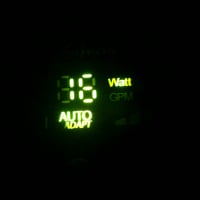Welcome! Here are the website rules, as well as some tips for using this forum.
Need to contact us? Visit https://heatinghelp.com/contact-us/.
Click here to Find a Contractor in your area.
If our community has helped you, please consider making a contribution to support this website. Thanks!
type of flooring options Radiant staple up.
Options
KevinHughes
Member Posts: 3
I have recently installed staple up with Omega heat transfer plates. I currently have the 20 year old Pergo engineered wood flooring. There is a little de lamination around the seams in some areas.
I am looking for the top products that can stand the warmest temperatures. Tile and quarter sawn hard wood excluded.
The products we are looking at are the engineered wood plank's and vinyl plank flooring. All the flooring companies say keep temp under 80* and we like to run our water temp at 120 to 140* 140 Preferably any experience with These products?
Any recommendations on types of flooring.
0
Comments
-
It's surface panel temps that have limits, not the tubing loop water temperature. Better pre-engineered products are Khars, Junckers, Timbergrass and Lowenstein.0
-
What are the heat loads? BTU/ sq ft. If the loads are too high you may not be able to get adequate heat out of the floor. 82°F is about as warm as you want to run the surface temperature. That 80-82F will be common with any wood products. The quality engineered products are the best over radiant.
140F SWT seems high for an aluminum plate system unless you have thick subfloors?
How's the humidity? Expansion and contraction of wood floors has a lot to do with moisture also.
With an 82F surface and a room of 70F, expect about 22-24 btu/ sq ft
The supply temperature depends on the subfloor material, any foam under the flooring etc.Bob "hot rod" Rohr
trainer for Caleffi NA
Living the hydronic dream1 -
100% agree with Paul.Paul Pollets said:Better pre-engineered products are Khars, Junckers, Timbergrass and Lowenstein.
I have Khars with underfloor plates with no issues. Be sure to follow manufacturers recommendations to leave expansion gap around exterior.
0 -
I have a 101 year old house with single glazed windows and hardwood floors and a boiler with outdoor reset; Radiant Engineering thinfin staple-up plates. The manufacturer of the plates recommends water temperatures no greater than 120F and in the past, I've had water temperatures up to 130F and the hardwood is no longer the same as it used to be. It's cracked and separated in places.
I don't think an engineered wood floor will react the same, but follow the instructions and guidelines. As far as staple-up plates, it's all about how large your heatloss is.8.33 lbs./gal. x 60 min./hr. x 20°ΔT = 10,000 BTU's/hour
Two btu per sq ft for degree difference for a slab0 -
What floor type do you have?I have a 101 year old house with single glazed windows and hardwood floors and a boiler with outdoor reset; Radiant Engineering thinfin staple-up plates. The manufacturer of the plates recommends water temperatures no greater than 120F and in the past, I've had water temperatures up to 130F and the hardwood is no longer the same as it used to be. It's cracked and separated in places.
I don't think an engineered wood floor will react the same, but follow the instructions and guidelines. As far as staple-up plates, it's all about how large your heatloss is.
I have had some movement with older wide plank ...... not so with new --- fully coated after being acclimated in a climate controlled house
0 -
What floor type do you have?3/4" tongue-and-groove fir subfloor, 5/16" hardwood.8.33 lbs./gal. x 60 min./hr. x 20°ΔT = 10,000 BTU's/hour
Two btu per sq ft for degree difference for a slab0 -
That flooring build up is reasonable. Two tubes in each bay? Got access to an infrared camera? that would show how consistent the floor temperature is. Well insulated below the plates?
Still, the load calculation, room by room may have the answer to why you need such high SWT.Bob "hot rod" Rohr
trainer for Caleffi NA
Living the hydronic dream0 -
3/4" tongue-and-groove fir subfloor, 5/16" hardwood.
Have had some movement on an older 6" beach floor -- it had a lot of gaps to start with and fit the project so I was not going to replace 1500 sf of flooring. That was 3/4 over typical plywood decking. Most of the old places I rehabbed had various red oak flooring and they seem to take it well.
On new floors, since I aways use wide boards -- coat the backs of the boards with finish along with giving the boards lots of time to acclimate. All the new projects have been over Warmboard and none have had problems -- even my newest with some 14" wide white oak. This is the second winter and it's nice and tight. AC in the summer0 -
OP, what did you end up doing?0
Categories
- All Categories
- 87.3K THE MAIN WALL
- 3.2K A-C, Heat Pumps & Refrigeration
- 61 Biomass
- 429 Carbon Monoxide Awareness
- 120 Chimneys & Flues
- 2.1K Domestic Hot Water
- 5.8K Gas Heating
- 115 Geothermal
- 166 Indoor-Air Quality
- 3.7K Oil Heating
- 77 Pipe Deterioration
- 1K Plumbing
- 6.5K Radiant Heating
- 395 Solar
- 15.7K Strictly Steam
- 3.4K Thermostats and Controls
- 56 Water Quality
- 51 Industry Classes
- 50 Job Opportunities
- 18 Recall Announcements



